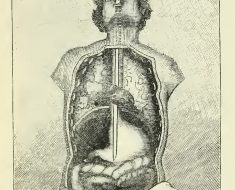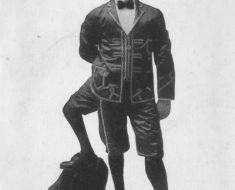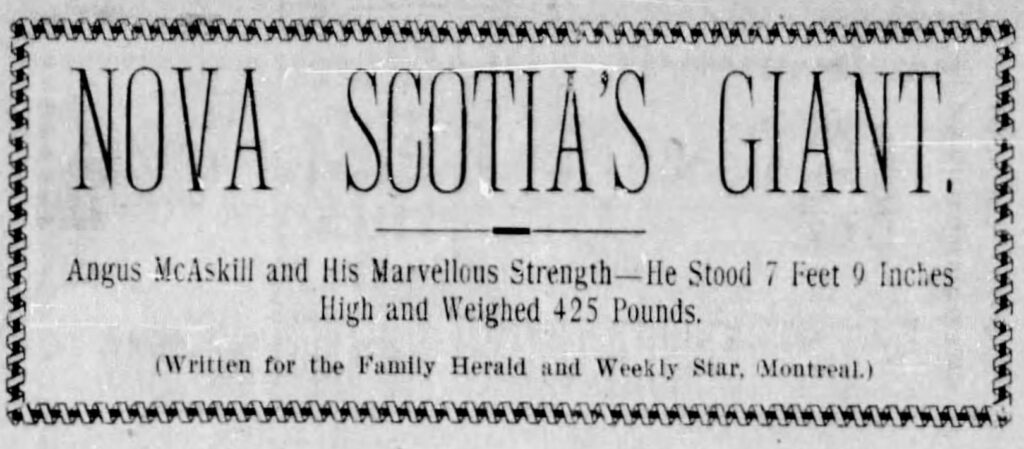
In my lifetime, it’s been hard to imagine anyone bigger and stronger than Andre the Giant. At more than seven feet tall and weighing more than 500 pounds, he truly was a giant who possessed enormous strength. Countless articles and documentaries reminisce about his remarkable feats of strength. Nearly two hundred years ago, people spoke the same way about Angus MacAskill, the Nova Scotia Giant.
At 7’-9” tall, MacAskill would have towered over Andre. He weighed 425 pounds and boasted a fifty-inch chest. His open palm measured six inches wide and 12 inches long. His boot measured 18 inches. It’s no surprise that at the time he was considered the strongest man alive.
MacAskill was born in Scotland in 1825, but grew up in St. Ann’s on Cape Breton Island in Nova Scotia, Canada. His growth spurt, however, didn’t start until he was 15. “Indeed he was remarkably small and puny as a boy,” wrote one acquaintance of the MacAskill family in 1898, “and his father would jestingly talk of sending Angus back to the old country to act as hen-keeper—an office which was generally left to small boys who could do nothing else.”
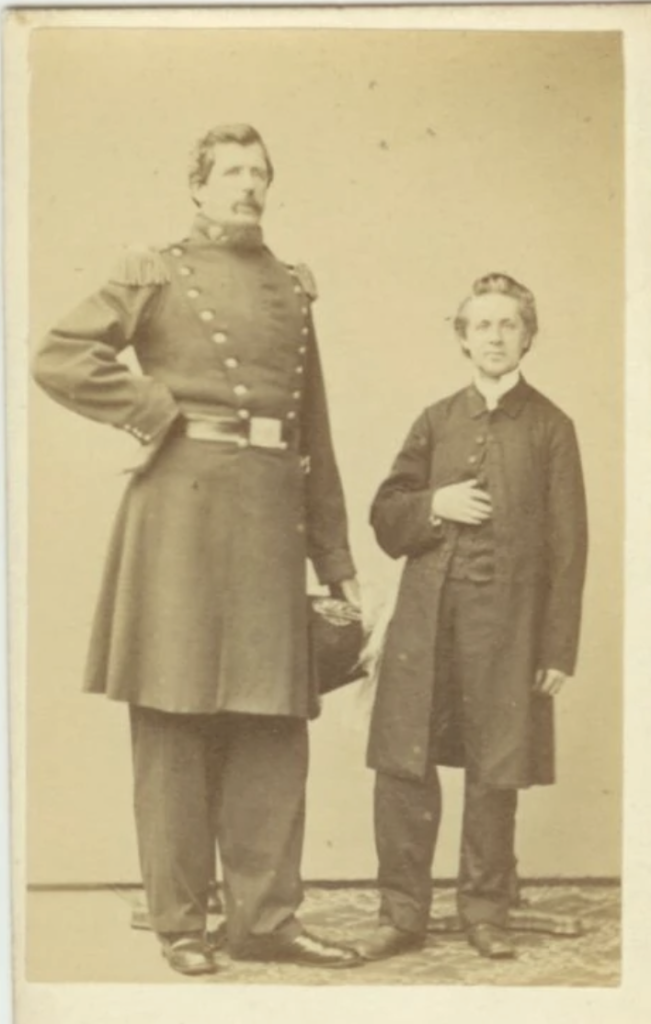
By his early twenties he had transformed into the biggest man anyone had ever seen. He reportedly shied away from attention, and would skip church to avoid drawing people’s attention away from the weekly sermon. MacAskill found joy simply working on his family farm and fishing.
Eventually, P. T. Barnum heard about the giant. During a visit to Cape Breton the impresario convinced MacAskill to capitalize on his height. By 1849, Barnum paired him with his exact opposite—Tom Thumb. Together, they were billed as The Tallest and The Smallest and toured the world for five years.
Thumb, whose real name was Charles S. Stratton, danced on MacAskill’s giant outstretched palm. At the end of the jig, the giant would slip his diminutive partner into the pocket of his overcoat, which completely engulfed Stratton.
“Newspapermen were used to Barnum’s flamboyant claims and discounted much of what he said but, as far as the boy from Nova Scotia was concerned, the reporters were forced to admit that, for once, Barnum was right,” wrote journalist Michael MacDougall in 1960.
Of course, holding Tom Thumb in one hand was hardly a feat of strength for MacAskill. It’s been said he could lift 3,000 pounds over his head and could drag ten times that weight across a flat surface.
Despite that, there were always those who liked to challenge MacAskill, but all failed. One of the greatest failures was suffered by a fighter named Red McManus. Full of bravado, McManus came to Cape Breton and talked trash about MacAskill. He called him a coward and a phony when the giant held back from accepting his latest challenger. Eventually, he’d heard enough talk and met McManus in a makeshift ring. The two met in the center and cordially shook hands—and that proved to be a swift end to the fight. As MacAskill clutched McManus’s hand, the fighter screamed in agonizing pain and collapsed to his knees. The giant had crushed every bone in his hand.
Another challenge came from a wrestler who also visited the giant’s hometown. MacAskill accepted the contest, and like his bout with McManus, made quick work of it. According to one newspaper account, he “picked him up despite his 300 pounds of weight and hurled him over a nearby woodpile ten feet high and twelve feet across the top.”
A final test of strength occurred on a boat. A man wagered that the giant couldn’t lift the ship’s anchor, which weighed about 2,100 lbs. According to one telling of the tale, MacAskill “seized the anchor, and, with very little apparent effort, put it on his shoulder. One of the barbs of the anchor caught in his shoulder as he was throwing it off, and the result was that the giant was hurt very seriously.” He never fully recovered.
MacAskill later returned home to Cape Breton and opened a mercantile business. During a business trip in 1863 he suddenly fell ill. A week later, on August 8, he died peacefully in his sleep. The attending doctor claimed the giant suffered from brain fever.
The custom-made coffin was enormous. James Donald Gillis, author of 1899’s The Cape Breton Giant: A Truthful Memoir, said, “In size the coffin was a sight of a life time.” He described it as being large enough to float three men across the Bay of St. Ann’s.
A tombstone at his grave in Englishtown on Cape Breton Island has the following inscription:
Erected
To
The Memory Of
Angus MacAskill
The Nova Scotia Giant
Who Died August 8, 1863
Aged 38 Years
While one can only imagine what a meeting with Andre the Giant might have looked like, MacAskill did have at least one contemporary giant who may have bested him in feats of strength. Miles Darden of North Carolina (1799-1857) reportedly grew to stand 7 feet, 6 inches and weighed just over 1,000 pounds. He was known to overpower bulls.
If only Barnum had paired the two in a battle of the behemoths. Perhaps with Tom Thumb as referee for an added touch of theater.

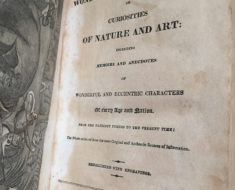

![Artificial nose, 17th-18th century, made of plated metal. Such noses would have been made to replace an original, which may have been congenitally absent or deformed, lost through accident or during combat or due to a degenerative disease, such as syphilis. By Science Museum London / Science and Society Picture Library [CC BY-SA 2.0 (https://creativecommons.org/licenses/by-sa/2.0)], via Wikimedia Commons](https://www.weirdhistorian.com/wp-content/uploads/2017/12/Artificial_nose_17th-18th_century_By-Science-Museum-London-Science-and-Society-Picture-Library-CC-BY-SA-2.0-via-Wikimedia-Commons-235x190.jpg)
